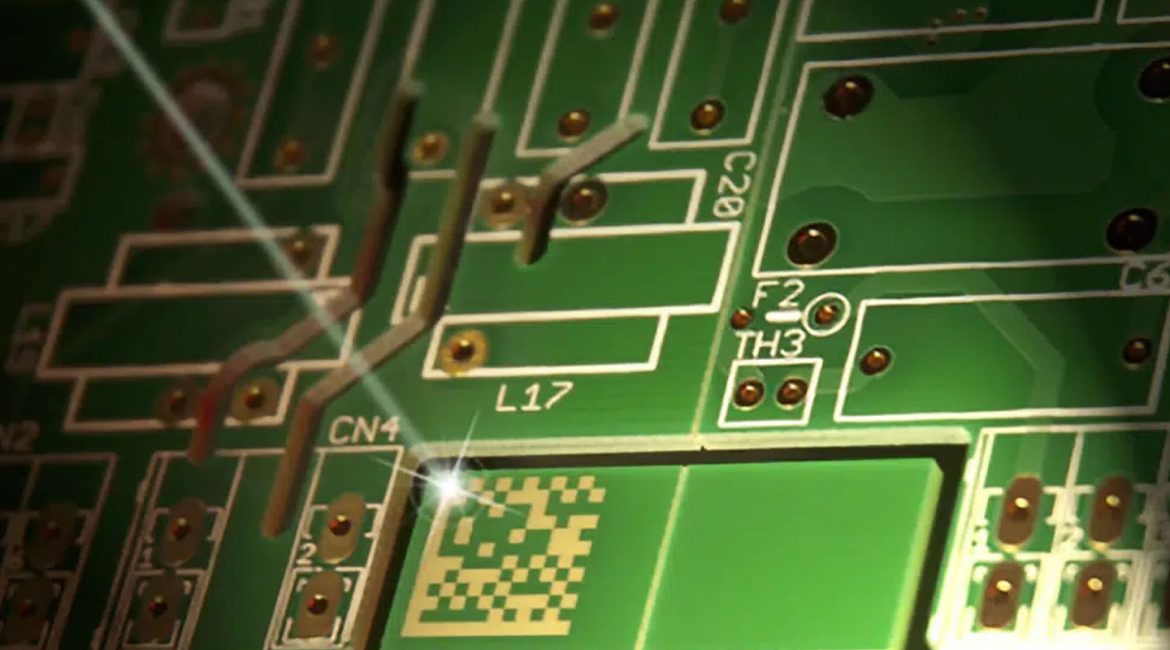In electronics manufacturing, marking on PCBs (such as QR codes, serial numbers, company logos, etc.) is crucial for product traceability and quality management. Choosing the right laser marking machine is like equipping your PCB with a high-precision, high-speed custom pen, giving it a unique identity. But, with so many laser devices on the market, how do you make the right choice? Let’s explore some key factors in selecting a UV laser marking machine.
First and foremost, the type of laser is a determining factor. For PCBs, a UV laser marking machine is generally the preferred option. Why is that? Well, because PCBs typically consist of copper layers, fiberglass substrates, and solder mask (green oil). Traditional infrared lasers (like fiber lasers) generate a lot of heat during marking, which can cause carbonization, burning, or damage to the solder mask. Consequently, this affects the electrical performance of the circuit board, and even leads to micro-cracks. Therefore, a UV laser marking machine is a better choice.
However, a UV laser marking machine utilizes a “cold” process. It uses high-energy photons to directly break the molecular bonds of the material, marking it through chemical ablation. Because of this, the resulting characters have clear edges, minimal heat-affected zones, and no damage to the PCB substrate or internal circuitry. Indeed, this makes a UV laser marking machine especially suitable for PCB marking applications that require high precision and are sensitive to heat.
Next, it’s important to consider marking precision and speed. Characters and QR codes on PCBs are often very small, requiring extremely high resolution for readability. Therefore, when selecting a UV laser marking machine, you should focus on its spot diameter and galvanometer scanning speed. Generally speaking, the smaller the spot diameter, the higher the marking precision and the finer the characters.
Additionally, in highly automated electronics production lines, marking speed directly affects production capacity. For instance, a UV laser marking machine equipped with a high-speed galvanometer system can ensure fast and accurate marking in assembly line operations. This allows for “stop-and-mark” or “on-the-fly” marking, thereby significantly improving production efficiency.
Furthermore, integration and automation are also very important. Modern PCB production lines are highly automated. Therefore, the UV laser marking machine you choose must seamlessly integrate into your existing production system. This means the equipment needs to have CCD visual positioning capabilities. This function can automatically identify the position and angular deviation of the PCB and automatically correct it, ensuring precise marking positions. Moreover, it should be able to communicate data with the MES (Manufacturing Execution System), enabling real-time reading and uploading of marking information and truly integrating into the smart manufacturing process.
Finally, don’t overlook the supplier’s service and expertise. PCB marking involves delicate parameter adjustments and complex optical designs. Choosing a supplier with extensive experience in the electronics industry, who can provide professional application support and fast after-sales service, is essential. This ensures that you can receive timely and effective technical guidance when encountering any material or process adjustments after the equipment is put into use, thereby guaranteeing continuous production and product quality.
In summary, the core principle for choosing a suitable UV laser marking machine for PCBs is to prioritize a UV “cold” laser, ensure high precision and speed, and require the equipment to have strong automation and integration capabilities.

